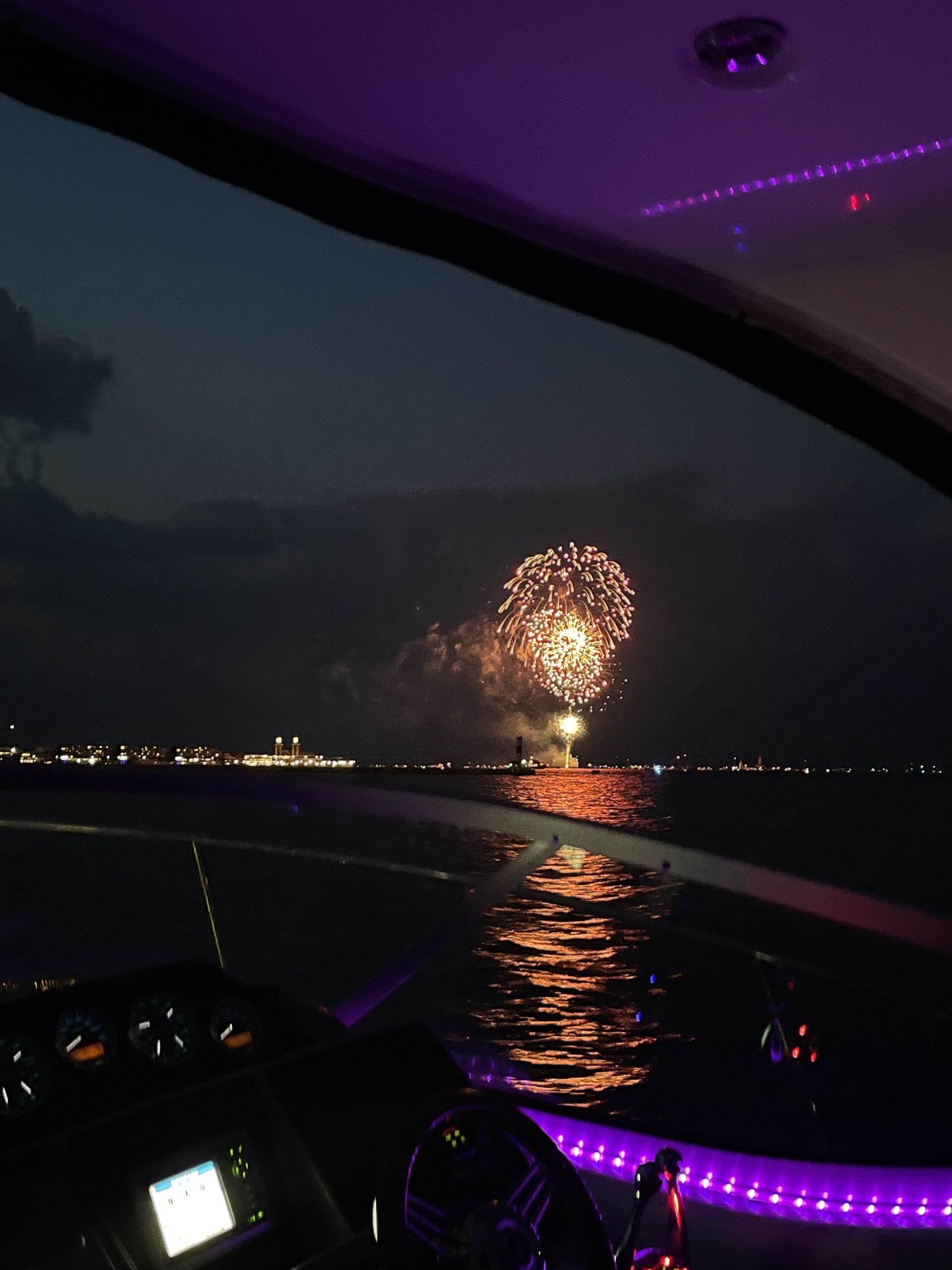Can’t wait for the summer
Tag: Chicago
Your Guide to Renting a Bareboat Charter at the Playpen in Chicago
Nestled along the vibrant shores of Lake Michigan, the Playpen is Chicago’s premier playground for maritime enthusiasts. Whether you’re a seasoned sailor or a curious tourist looking to take the helm for a day, renting a bareboat charter in this iconic location offers an unrivaled opportunity to experience the city from a fresh, exhilarating perspective. This comprehensive guide will explore the ins and outs of renting a bareboat charter at the Playpen, ensuring that your maritime adventure is as breathtaking as the Chicago skyline.
Understanding Bareboat Charters
A bareboat charter refers to renting a vessel without a crew or provisions. You, as the renter, become the captain, responsible for navigating and managing the boat throughout the rental period. This type of charter is ideal for those with some boating experience and a desire for adventure on their terms.
Why Choose the Playpen for Your Bareboat Charter?
The Playpen, a no-wake zone located off Chicago’s Lake Shore Drive, is a safe and scenic area perfect for boating. Known for its calm waters and stunning views of the Chicago skyline, it is an ideal spot for those looking to charter a boat and enjoy time with friends, family, or even solo.
Preparing for Your Bareboat Charter
Before you can enjoy the freedom of captaining your own vessel in the Playpen, there are several key steps to prepare:
- Boating License and Qualifications: Depending on your residency and boat type, you might need a boating license. Illinois requires any person born after January 1, 1998, to have a valid Boating Safety Certificate. Additionally, most charter companies will require proof of competency, such as a sailing resume or a boating course certificate.
- Choosing the Right Boat: The Playpen’s calm waters are suitable for various boat types, including sailboats, powerboats, and catamarans. Consider the size of your group, your boating experience, and your comfort level when selecting a boat.
- Safety First: Familiarize yourself with the boat’s safety equipment, including life jackets, communication devices, and first aid kits. Ensure you know how to operate the vessel and understand basic troubleshooting procedures.
- Plan Your Route: While the Playpen is a designated area, you have the freedom to explore other parts of Lake Michigan. Plan your route according to weather conditions and the duration of your rental.
What to Bring on Your Bareboat Charter
- Packing the right items can make the difference between a good and great boating experience. Here’s what you should consider bringing along:
- Navigation Tools: Even if the boat is equipped with GPS, bring a map and a compass as backups.
Sun Protection: Sunscreen, sunglasses, and hats are essential under the open sky. - Appropriate Clothing: Weather on Lake Michigan can change rapidly. Bring layered clothing and waterproof gear.
- Food and Beverages: Pack enough water and food for the duration of your trip, considering that you’ll be in charge of your own catering.
- Entertainment: Music systems, fishing gear, or a book can enhance your relaxation as you drift along the tranquil waters.
Top Experiences to Enjoy in a Bareboat Charter at the Playpen
Renting a bareboat charter at the Playpen opens up a world of activities and experiences:
- Skyline Sightseeing: Navigate along the coast for a unique view of Chicago’s famous architecture from the water.
- Sunset Cruises: Time your charter to witness the spectacular sunset over the city, providing a perfect backdrop for memorable photos.
- Swimming and Water Sports: Anchor in the Playpen and enjoy swimming or paddleboarding in the safe, designated areas.
- Fishing: While the Playpen itself is more about leisure than sport, the surrounding waters can offer some casual fishing opportunities.
Conclusion
Renting a bareboat charter at the Playpen in Chicago offers a unique blend of adventure, freedom, and beauty. It allows you to explore Lake Michigan at your own pace and according to your own preferences. Whether you’re celebrating a special occasion or simply seeking a day out on the water, a bareboat charter can provide an unforgettable experience. So gather your crew, plan your journey, and set sail for a day of exploration and fun in one of Chicago’s most picturesque settings.
By equipping yourself with the right knowledge and preparations, your day at the Playpen will not just be about sailing; it will be about crafting memories that last a lifetime.
The History of Navy Pier’s Weekly Fireworks: A Chicago Tradition
The History of Navy Pier’s Weekly Fireworks: A Chicago Tradition
Introduction
Navy Pier, one of Chicago’s most iconic landmarks, has long been a center of entertainment and culture. Its weekly fireworks displays, a beloved tradition for both locals and tourists, illuminate the sky over Lake Michigan every Wednesday night during the summer. This blog post explores the rich history of Navy Pier, the origins of its fireworks tradition, and the array of attractions and activities that make Navy Pier a must-visit destination.
The Early History of Navy Pier
Navy Pier’s story begins in the early 20th century, when it was conceived as part of Daniel Burnham’s ambitious Plan of Chicago. Burnham, a visionary urban planner, envisioned a grand civic space that would serve both practical and recreational purposes. Construction of the pier, originally known as Municipal Pier, began in 1914 and was completed in 1916. It was the largest pier in the world at the time, stretching 3,300 feet into Lake Michigan.
The Pier’s Early Uses
Initially, the pier was designed to serve multiple functions. It featured facilities for freight and passenger ships, as well as spaces for recreation and entertainment. During World War I, the pier was used as a military training facility. After the war, it reverted to its original purpose, hosting a variety of events and attractions, including carnivals, concerts, and exhibitions.
Navy Pier During World War II
The outbreak of World War II saw the pier once again pressed into military service. Renamed Navy Pier in honor of the Navy personnel who trained there, it became a bustling training ground for pilots and other military personnel. Following the war, the pier entered a period of decline as commercial shipping waned and recreational use diminished.
The Renaissance of Navy Pier
The revitalization of Navy Pier began in earnest in the 1990s. Recognizing its historical and cultural significance, the city embarked on an extensive redevelopment project to transform the pier into a premier destination for entertainment, dining, and tourism. The revitalized Navy Pier reopened to the public in 1995, featuring a mix of attractions designed to appeal to a broad audience.
The Origins of the Fireworks Tradition
One of the most popular additions to Navy Pier during its renaissance was the introduction of weekly fireworks displays. These fireworks, which have become a quintessential part of the Chicago summer experience, were first launched in the mid-1990s as a way to draw visitors to the pier and enhance its festive atmosphere. The displays quickly became a hit, offering a dazzling spectacle against the backdrop of the Chicago skyline and Lake Michigan.
The Fireworks Today
Today, the fireworks displays at Navy Pier are a highlight of the summer season. Held every Wednesday and Saturday night from Memorial Day through Labor Day, the fireworks draw thousands of spectators to the pier and surrounding areas. Each show is meticulously choreographed to music, creating a mesmerizing experience that delights viewers of all ages.
What Else to Do at Navy Pier
While the fireworks are a major draw, Navy Pier offers a wealth of other attractions and activities that make it one of Chicago’s premier destinations. Whether you’re looking for family-friendly fun, cultural experiences, or simply a beautiful place to relax by the water, Navy Pier has something for everyone.
Family Fun and Entertainment
Navy Pier is home to a variety of attractions that cater to families and children. One of the most iconic features is the Centennial Wheel, a 200-foot-tall Ferris wheel that offers stunning views of the city and lake. The pier also features a carousel, an IMAX theater, and the Chicago Children’s Museum, which offers interactive exhibits and activities designed to educate and entertain young visitors.
Dining and Shopping
Food lovers will find plenty to enjoy at Navy Pier, which boasts a diverse array of dining options ranging from casual eateries to upscale restaurants. Visitors can savor everything from Chicago-style hot dogs and deep-dish pizza to fresh seafood and international cuisine. The pier also features a variety of shops and boutiques, offering everything from souvenirs and gifts to fashion and accessories.
Cultural Attractions
Navy Pier is a hub for cultural activities, with several venues that host performances and exhibitions throughout the year. The Chicago Shakespeare Theater, located on the pier, is renowned for its innovative productions of classic and contemporary plays. The Navy Pier Beer Garden, meanwhile, offers live music and entertainment during the summer months, creating a lively atmosphere for visitors to enjoy.
Seasonal Events and Festivals
In addition to the weekly fireworks, Navy Pier hosts a variety of seasonal events and festivals that celebrate the city’s diverse culture and heritage. Highlights include the Chicago Air and Water Show, the Chicago Flower and Garden Show, and the Winter WonderFest, a holiday-themed event featuring indoor ice skating, carnival rides, and festive decorations.
The Future of Navy Pier
As Navy Pier continues to evolve, it remains committed to providing a vibrant and dynamic experience for visitors. Recent and upcoming projects aim to enhance the pier’s offerings while preserving its historical significance. These initiatives include the addition of new green spaces, public art installations, and innovative attractions designed to appeal to a new generation of visitors.
Sustainability Initiatives
In recent years, Navy Pier has also placed a strong emphasis on sustainability and environmental stewardship. Efforts to reduce the pier’s carbon footprint include the implementation of energy-efficient technologies, waste reduction programs, and initiatives to promote public transportation and eco-friendly practices among visitors and vendors.
Conclusion
Navy Pier’s weekly fireworks displays are more than just a spectacle; they are a symbol of the pier’s enduring appeal and its place in the hearts of Chicagoans and visitors alike. From its early days as a multifunctional pier to its current status as a premier destination for entertainment and culture, Navy Pier has continually reinvented itself while remaining true to its roots.
As you plan your visit to Navy Pier, be sure to take in the fireworks, but also explore the many other attractions and activities that make the pier a beloved Chicago landmark. Whether you’re enjoying a ride on the Centennial Wheel, catching a show at the Chicago Shakespeare Theater, or simply strolling along the waterfront, Navy Pier offers a unique and unforgettable experience that captures the spirit of Chicago.



